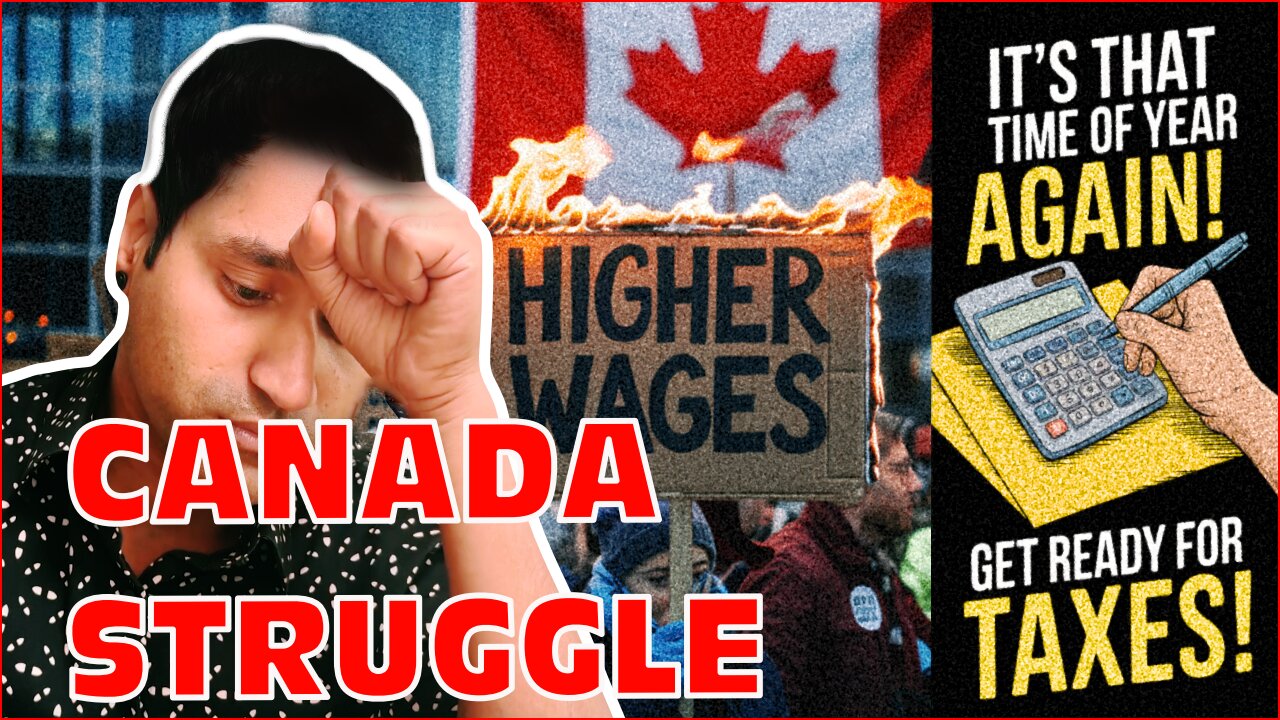Premium Only Content

Middle Class Struggles In CANADA Taxes And GOV Scam!
Hello, friends! It’s becoming clearer than ever that Canada’s middle class is being squeezed dry by government policies. People are waking up to this reality. Last month, after the federal budget announcement, when Finance Minister Chrystia Freeland addressed GST/HST applications on food items—explaining that prepared meals under $4 would be exempt, while other similar items would face varying tax rates—it ignited an intense debate online.
Social media was flooded with reactions. Some questioned the logic behind these arbitrary tax distinctions, while others joked that soon, even memes about taxation might be taxed. While it’s good that awareness is increasing, most Canadians still don’t realize the depth of the problem. This isn’t just about GST/HST on a few items—it’s about the gradual erosion of the middle class. And this issue isn’t tied to any single finance minister or government; it’s a systemic problem. Let’s break it down.
In the second quarter of 2024, Canada’s largest consumer goods retailer, Loblaw Companies Limited, reported troubling trends in consumer spending. The retail sector—particularly consumer packaged goods, which include food, personal care products, and other daily essentials—showed signs of strain. A decline in sales of these everyday necessities signals a deeper economic issue.
Retail analysts point to the shrinking middle class as the primary reason. Loblaw’s CEO noted a significant drop in urban consumer spending. But this isn’t just a Loblaw issue. Metro’s leadership has echoed the same concerns, pointing out weakening demand in major urban centers. Sobeys has reported similar trends, and even Canadian Tire has acknowledged reduced economic activity in its retail segment.
This means middle-class, city-dwelling Canadians no longer have the disposable income they once did. The rising tax burden, coupled with inflation and stagnant wages, has pushed many out of the middle class entirely. But before diving deeper, let’s clarify what “middle class” actually means in Canada.
According to Statistics Canada and leading economists, Canadian households generally fall into three main income groups:
* The Upper Class (Canada-1): This includes about 10% of the population, with household incomes exceeding $200,000 per year. This segment accounts for a disproportionate share of Canada’s total consumption.
* The Middle Class (Aspirational Class): Roughly 50% of Canadians fall into this category, with annual household incomes between $50,000 and $150,000. In cities like Toronto or Vancouver, a family of four typically needs at least $80,000 per year to maintain a middle-class lifestyle, though regional variations exist.
* The Lower-Income Class (Canada-3): This includes Canadians living below the middle-class threshold, many of whom are struggling with poverty or living paycheck to paycheck.
Most Canadian retailers primarily target the upper and middle classes with their products and marketing efforts.
-
 22:39
22:39
The Mel K Show
4 hours agoMel K & Representative Brandon Gill | Our Constitutional Republic is Being Restored | 4-26-25
27.4K17 -
 LIVE
LIVE
VapinGamers
3 hours ago $0.02 earned📣 Fortnite Family Night! - Games and Dubs with BrianZGame - !rumbot
211 watching -
 LIVE
LIVE
ThePope_Live
2 hours agoLIVE - First time playing The Finals in over a YEAR! Still good? with @Arrowthorn
74 watching -
 3:06:26
3:06:26
TruthStream with Joe and Scott
8 hours agoRoundtable with Patriot Underground and News Treason Live 4/26 5pm pacific 8pm Eastern
14.3K7 -
 8:52
8:52
Tundra Tactical
5 hours ago $0.76 earnedSCOTUS Denies Appeal, Minnesota Courts Deal 2a Win!
25.1K8 -
 LIVE
LIVE
a12cat34dog
7 hours agoONE WITH THE DARK & SHADOWS :: The Elder Scrolls IV: Oblivion Remastered :: FIRST-TIME PLAYING {18+}
371 watching -
 22:27
22:27
Exploring With Nug
14 hours ago $1.64 earnedSwamp Yields a Chilling Discovery in 40-Year Search for Missing Man!
40.8K17 -
 1:23:26
1:23:26
RiftTV/Slightly Offensive
9 hours ago $1.38 earnedThe LUCRATIVE Side of Programming and the SECRETS of the "Tech Right" | Guest: Hunter Isaacson
53.2K16 -
 27:57
27:57
MYLUNCHBREAK CHANNEL PAGE
1 day agoDams Destroyed India
63.1K20 -
 LIVE
LIVE
Phyxicx
9 hours agoLast minute practice before Sunday - 4/26/2025
234 watching